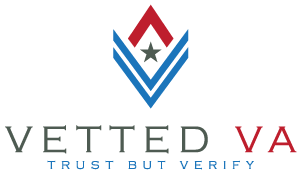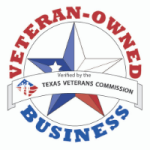Many Americans dream of the day they can retire, but figuring out “how much is enough” can feel overwhelming. For veterans and military families, retirement planning has an extra layer: housing. The good news is that your VA loan benefits can play a major role in creating a secure and affordable retirement.
This guide blends retirement savings basics with the rules from the VA Lender’s Handbook (VA Pamphlet 26-7) and VA.gov so you understand both the financial planning side and the VA loan side of retirement.
Setting a Retirement Savings Goal
Experts often point to the “4% rule,” which means you can safely withdraw about 4% of your retirement savings each year. That translates into needing about 25 times your annual expenses saved to cover a 30-year retirement.
But here’s where housing matters: if you plan to retire with a VA loan mortgage, your housing expenses will be part of that budget. If your goal is to retire mortgage-free, then your savings target may be lower because you won’t have a monthly payment.
Questions to ask yourself:
- At what age do I want to retire? (Social Security can start at 62, full benefits at 67 if born after 1960, or later for higher payments SSA.gov).
- Do I plan to have my mortgage paid off before retirement?
- How much do I expect to spend on travel, family time, or hobbies in retirement?
Knowing these answers gives you a real dollar figure to aim for.
Benchmarking Retirement Savings
If you’re early in your career, it’s hard to imagine retirement. That’s why many financial planners suggest benchmarks by age. Fidelity Investments, for example, suggests aiming for:
- Age 30 → 1x your salary saved
- Age 40 → 3x your salary saved
- Age 50 → 5x your salary saved
- Age 60 → 7x your salary saved
- Age 67 → 8x your salary saved
For veterans, the VA loan program can help keep those benchmarks within reach. No down payment and no private mortgage insurance (PMI) means you can redirect savings toward retirement accounts instead of tying up cash in housing costs.
Qualifying for a VA Loan in Retirement
Many veterans wonder: Can I still qualify for a VA loan after I retire? The answer is yes — as long as you can show stable, reliable income and meet residual income requirements.
According to the VA Lender’s Handbook (Chapter 4, Section 10), the VA accepts several types of retirement income for loan qualification:
- Social Security benefits (must be documented with an award letter).
- Military retirement or pension income.
- IRA, 401(k), or Thrift Savings Plan withdrawals (if consistent and likely to continue).
Lenders will verify that this income is likely to continue for at least 3 years. Residual income — the amount left after paying debts and obligations — is also required, with standards based on family size and region.
Example: A retired Army veteran using pension and Social Security may qualify for a VA loan to downsize into a single-level home that’s easier to maintain in retirement.
VA Loan Advantages for Retirement Planning
VA loans aren’t just for first-time buyers. They remain a powerful benefit throughout life. Key advantages in retirement include:
- No down payment required → frees up savings for retirement accounts.
- No PMI → lowers monthly payments compared to FHA or conventional loans.
- Interest Rate Reduction Refinance Loan (IRRRL) → allows retirees to refinance to a lower rate or payment with minimal paperwork.
- Survivor benefits → surviving spouses of veterans who died in service or from a service-connected disability may also be eligible for VA loans (VA.gov, Housing Assistance).
Together, these features make housing costs more manageable, allowing you to keep retirement savings intact.
Should You Pay Off Your Mortgage Before Retirement?
There’s no one-size-fits-all answer here.
Pros of paying off your VA loan early:
- Lower monthly expenses in retirement.
- Peace of mind of owning your home outright.
Cons:
- Extra mortgage payments might reduce how much you save in retirement accounts.
- VA loans already carry competitive rates — your money may grow more in a Roth IRA or TSP.
A balanced approach might work best: pay down your mortgage while still contributing to retirement savings. Some veterans choose a 15-year VA loan early in their careers so their home is paid off before retirement.
Saving for Retirement With a Military Mindset
Beyond housing, veterans should take advantage of traditional retirement savings tools:
- 401(k) — Employer-sponsored, pretax contributions. 2023 contribution limit: $22,500 ($30,000 if age 50+).
- Roth IRA — After-tax contributions; withdrawals in retirement are tax-free. 2023 limit: $6,500 ($7,500 if age 50+).
- Thrift Savings Plan (TSP) — Federal employees and military members can contribute with the same limits as 401(k).
(Source: IRS.gov contribution limits)
Tip: If you’re choosing between making an extra VA loan payment or maxing out retirement savings, run the math with a financial planner. Long-term returns from retirement accounts often outweigh the savings from faster mortgage payoff.
Getting Professional Guidance
Just like you’d never go on a mission without a plan, retirement deserves the same discipline. Meeting with a VA-experienced loan officer and a financial planner can help you:
- Understand how your VA loan fits into your retirement timeline.
- Balance debt payoff with savings growth.
- Protect your housing security in retirement.
Conclusion
Retirement planning isn’t just about saving; it’s about smart housing choices too. Veterans have a powerful advantage with the VA loan program — from buying a retirement home to lowering costs with a refinance. Combine that with consistent retirement savings, and you’ll be in strong shape for your next chapter.
Next Step: Connect with a Vetted VA professional to understand how your VA loan benefits fit into your retirement strategy.





